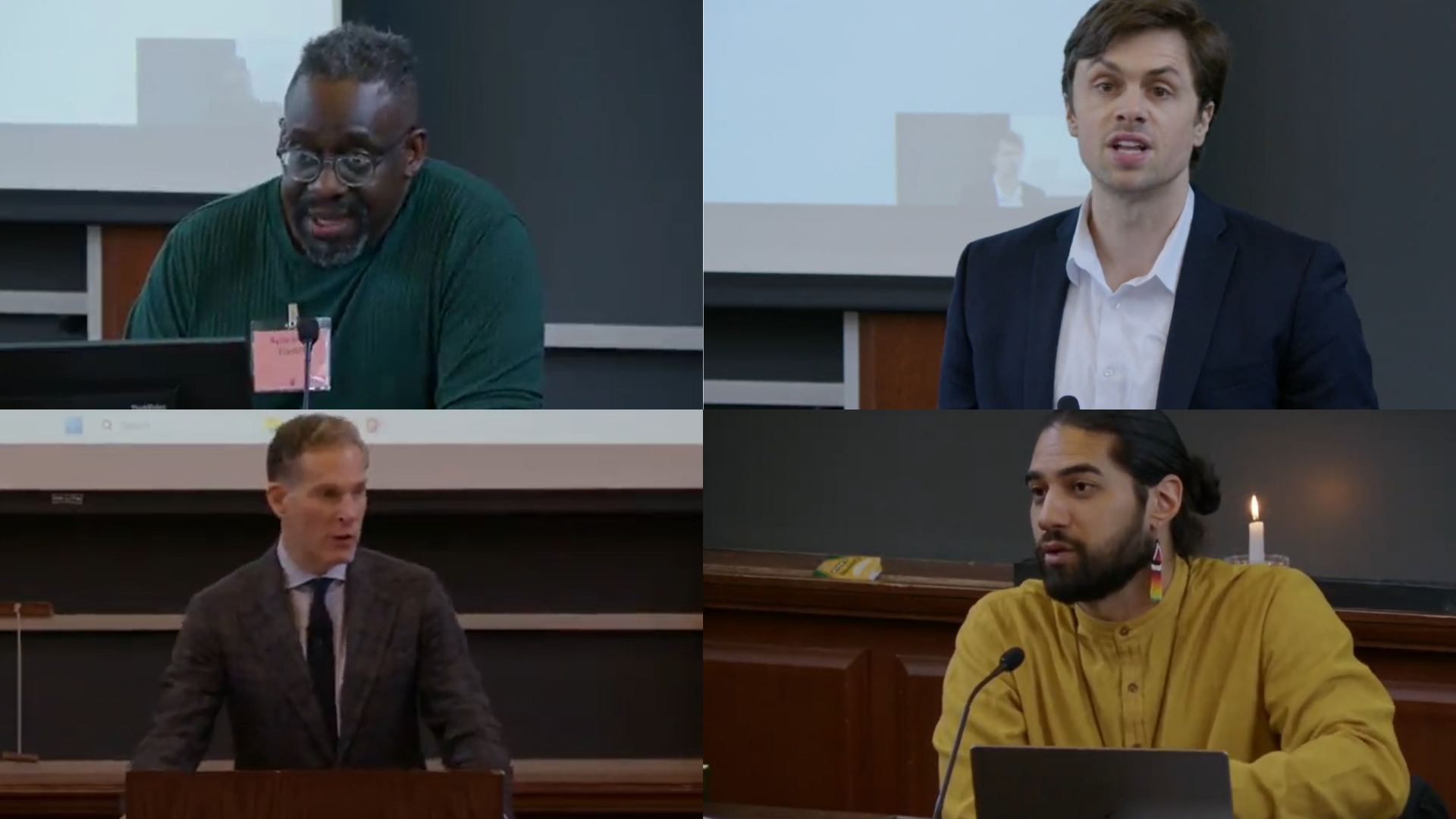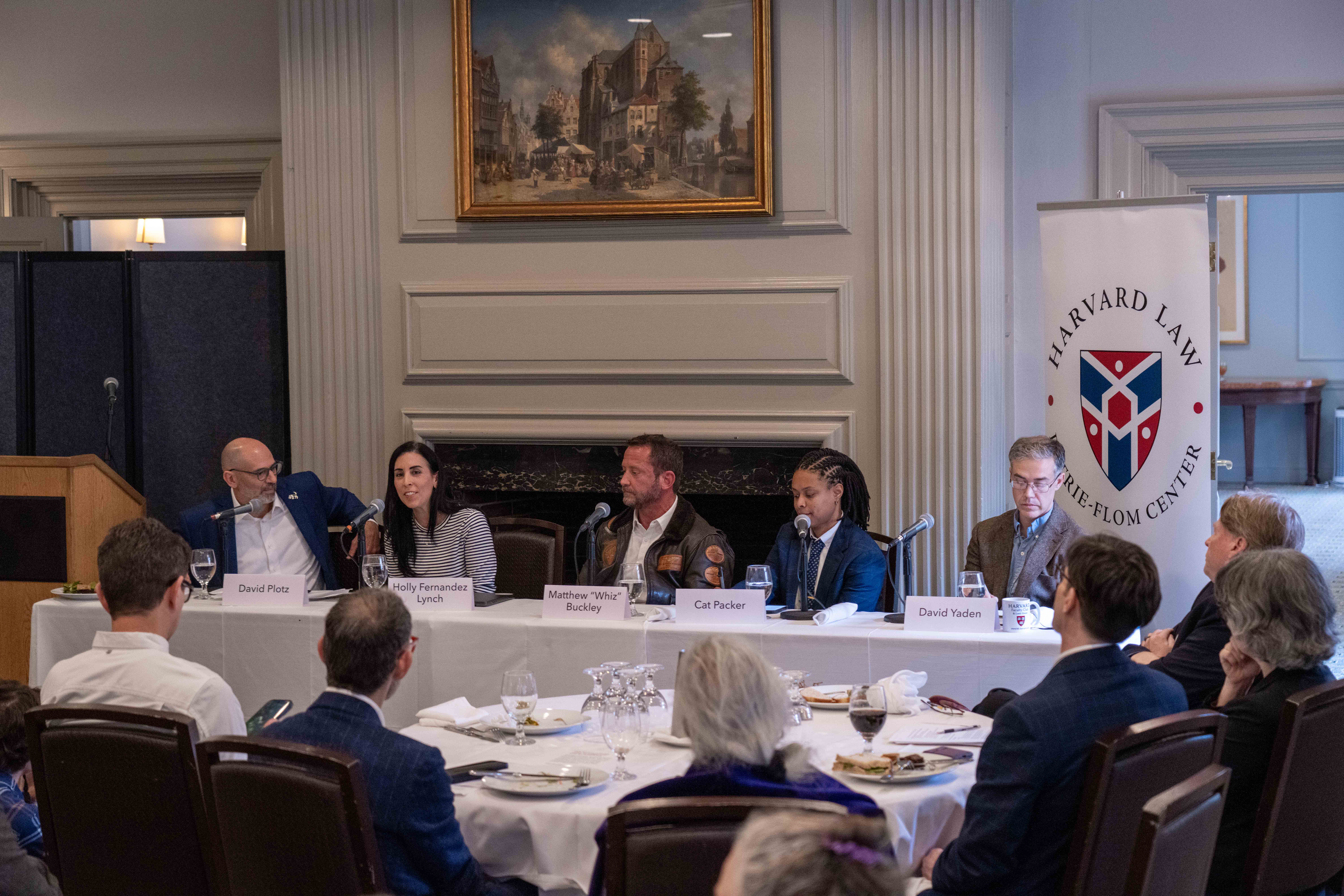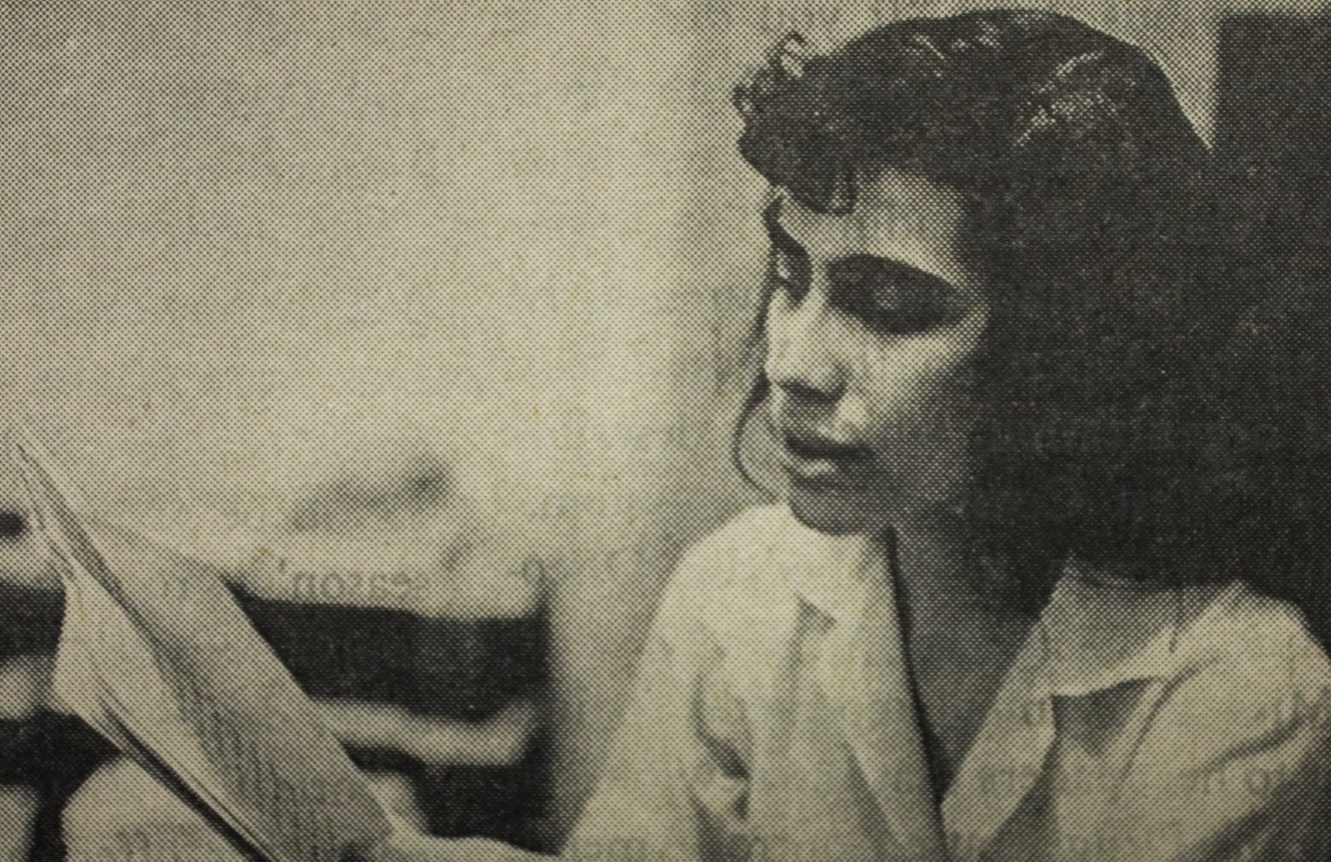Psychedelics in Monotheistic Traditions: Between Sacramental Practice and Legal Recognition
Alongside the last two decades of growth in the field of psychedelic medicine, the use of psychedelics in religious and spiritual contexts has increased, not only in novel psychedelic spiritual communities (i.e., psychedelic churches) and indigenous or Native American contexts, but in Abrahamic religious communities as well.

Counter-clockwise from top right: Jeffrey Breau (Harvard Divinity School, PULSE), Ismail Ali, Co-Director of MAPS, Noah Feldman (Harvard Law School Professor ), Ayize Jama-Everett (author)
Published
Author
Share
Alongside the last two decades of growth in the field of psychedelic medicine, the use of psychedelics in religious and spiritual contexts has increased, not only in novel psychedelic spiritual communities (i.e., psychedelic churches) and indigenous or Native American contexts, but in Abrahamic religious communities as well. Though in relatively small numbers compared with these other groups, Christians, Jews, and Muslims are increasingly using psychedelic compounds in religious contexts and imbuing their psychedelic use with religious, cultural, or spiritual significance.
To explore the religious, theological, and legal questions occasioned by these new developments, Harvard Law School Professor Noah Feldman and I convened the first-ever symposium on the subject, hosted by HLS on March 5-6, 2025. The symposium, Psychedelics and Monotheistic Traditions: Sacramental Practice and Legal Recognition, was sponsored by the Julis-Rabinowitz Program on Jewish and Israeli Law at Harvard Law School and the Harvard Study of Psychedelics and Culture, with invaluable assistance from Victoria Litman and Mason Marks of the Petrie-Flom Center’s Psychedelic Use, Law, and Spiritual Experience (PULSE) project.
It was a remarkable event, featuring presentations by 42 legal scholars, scholars of religion, practicing lawyers, and psychedelic practitioners, a unique combination, especially in light of the continued legal prohibitions in place. It was attended by more than 500 people in person and online, and videos of most presentations are now available online.
The first day focused on the variety of religious understandings of psychedelic use in Christian, Jewish, and Muslim contexts. Probably the most well-known claim about this intersection is that these religious communities used psychedelics in the distant (or Bibilcal) past, a view contained in Brian Muraresku’s bestselling The Immortality Key, for example. However, none of the scholars and few practitioners at the conference defended this view, and several — including Charles Stang, Professor of Early Christian Thought at Harvard Divinity School, Dr. J. Christian Greer of Stanford and Queens University Professor Sharday Mosurinjohn,subjected it to significant, even devastating, critique. Mosurinjohn, citing other scholars, said the ancient-psychedelics view requires “symbolic flights of fancy” and “creative misreadings” of Biblical texts, ultimately arguing that “the persistence of the belief that ancient Western religions were fundamentally psychedelic less a historical hypothesis but a myth serving cross purposes for different psychedelic communities.”
Instead, religious scholars and practitioners focused on precedents not of psychedelics specifically, but of altered states of consciousness (ASCs) more broadly. Rev. Dr. Jaime Clark-Soles, for example, listed more than a dozen methods of cultivating ASCs recorded in Biblical texts, including dreaming, deep sleep, intoxication, hypnosis, and successfully induced meditative states.“What we do not know is whether the earliest Christians specifically used psychedelics,” Rev. Dr. Clark-Soles said. “But what we do know is that they valued non-ordinary states of consciousness, secret knowledge not apparent to all, and direct experience.” Rabbi Dr. Jill Hammer discussed how female priestesses combined music, drumming, dancing, and wine to create ecstatic experiences in the Bible: “In these brief descriptions of vineyard rituals, we may be seeing hints of an Israelite consciousness-changing ceremony involving drum, wine, and dance, one that was meant to gladden the hearts of human beings,” she said.
Other presentations included Dr. Yosef Rosen discussing the baalei shem of 18th and 19th century Europe, Dr. Ron Cole-Turner discussing the importance of ecstatic love in Christian mysticism, and a dialogue between renowned Jewish Studies professor Elliot Wolfson and Professor Feldman on the role of synesthesia in mystical and psychedelic experiences. Video recordings of these presentations are available on the Harvard Program in Jewish Law’s YouTube Channel.
These and other scholarly papers were accompanied by three unique panels of practitioners from Jewish, Christian, and Muslim backgrounds, who spoke about a wide range of social, cultural, and theological aspects of their present-day psychedelic practice. .
The second day of the symposium was focused on the possibilities of gaining legal recognition for religious psychedelic use, either as exemptions to Controlled Substances Act or through state-level legalization. Of course, unlike Native American peyote traditions or South American-derived ayahuasca traditions, Abrahamic communities cannot lay claim to a single “sacrament” that exists within their religious traditions. But they can articulate, as the first day’s presenters described, how psychedelics fulfill longstanding and important religious functions, from revelation and mystical union to love, healing, and the building of religious community.
Still, Abrahamic religious claims may face uphill legal battles. Georgetown Law professor Martin Lederman expressed skepticism that the current Supreme Court would legitimize a novel religious practice in the face of public policy concerns, even as Professor Feldman insisted that innovation and syncretism are hallmarks of authentic religious practice. Professors Josh McDaniel and Victoria Litman analyzed the state of play at federal and state levels. Legal practitioners Ismail Ali, Allison Hoots, and John Rapp discussed the dysfunctional administrative processes in place at the Drug Enforcement Agency, which until this year had never granted a request for a RFRA exemption without the threat of litigation. And a surprise guest, Joe Tafur, one of the leaders of the Church of the Eagle and Condor, which won a settlement from the DEA enabling them to consume ayahuasca as part of their religious practice, reflected on the ways in which the church made itself legible to government officials — a feature also described by Jeffrey Breau, who showed how novel psychedelic communities have done the same thing.
The second day also included sessions on some of the challenges in the psychedelic field, from persistent racial inequities (Ayize Jama-Everett) to tendencies toward eugenics and elitism (Professor Laura Appleman) and concerns about safety, right relationship with indigenous communities, and the potentially harmful consequences of expanding religious exemptions to laws of general application.
What emerged from the symposium is a portrait of a nascent movement — or perhaps collection of movements — at the intersections of religious innovation, societal change, and legal ambiguity. As Professor Lederman joked, it is rare for a law school conference to feature speakers openly admitting to violating the law — let alone when those speakers are also rabbis, Islamic scholars, or clergy in active ministry. It was clear, though, that however the administrative and legal rules regard these practitioners, their numbers are growing as Americans seek meaning, community, and spiritual experience outside the usual parameters of traditional religion — or, perhaps, by enlarging them.


